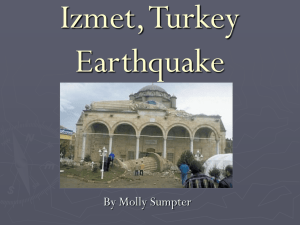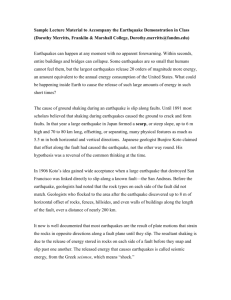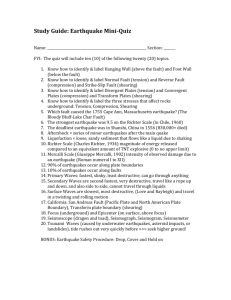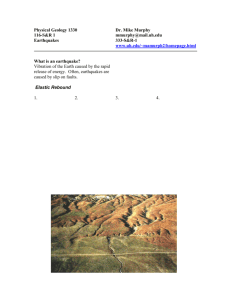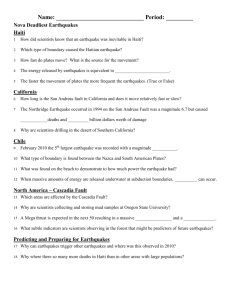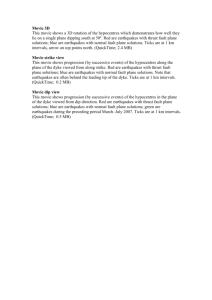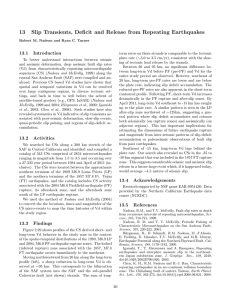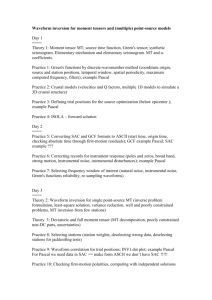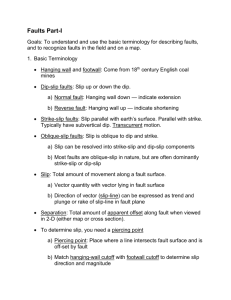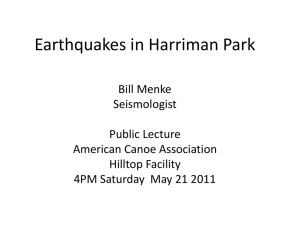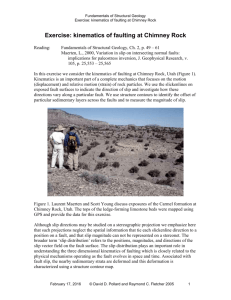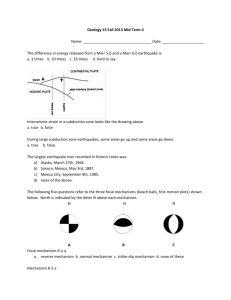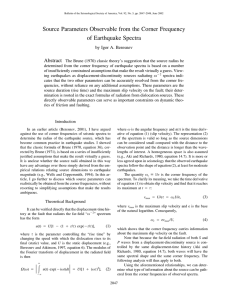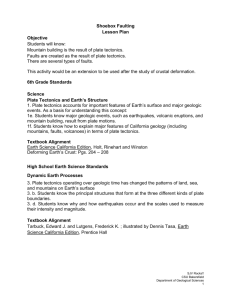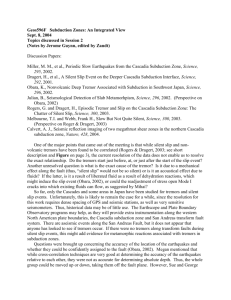grl53143-sup-0001-SuppInfo1
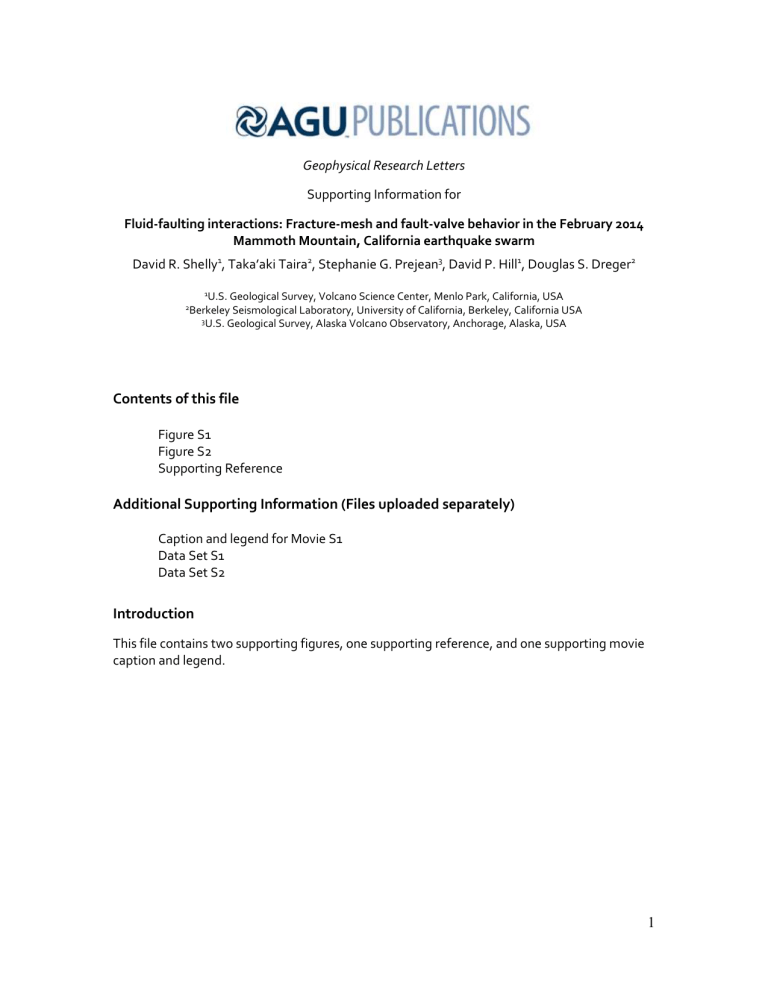
Geophysical Research Letters
Supporting Information for
Fluid-faulting interactions: Fracture-mesh and fault-valve behavior in the February 2014
Mammoth Mountain, California earthquake swarm
David R. Shelly 1 , Taka’aki Taira 2 , Stephanie G. Prejean 3 , David P. Hill 1 , Douglas S. Dreger 2
1 U.S. Geological Survey, Volcano Science Center, Menlo Park, California, USA
2 Berkeley Seismological Laboratory, University of California, Berkeley, California USA
3 U.S. Geological Survey, Alaska Volcano Observatory, Anchorage, Alaska, USA
Contents of this file
Figure S1
Figure S2
Supporting Reference
Additional Supporting Information (Files uploaded separately)
Caption and legend for Movie S1
Data Set S1
Data Set S2
Introduction
This file contains two supporting figures, one supporting reference, and one supporting movie caption and legend.
1
Figure S1. a) Stereonet of NE-striking fault orientations, and b) their rakes from the highest quality fault plane solutions in the area of Figure 2, for events occurring between 2 and 14
February, determined using fpfit [Reasenberg and Oppenheimer, 1985] and polarity and ray parameters obtained from the NCEDC. Selection criteria are a misfit of less than 0.02, a maximum azimuthal gap of less than 60 degrees, and more than 25 first motions used in the inversion. With the exception of one event, solutions have NE striking planes with oblique-left lateral slip. The dominant set of planes strike between 50-70 degrees and dip 40-70 degrees.
This orientation is consistent with the trend of fault zones imaged through earthquake relocations and the fault plane solution for the M 3.1 event. With the exception of one event, fault orientations and slip are consistent with a fault mesh model in the local stress field.
2
Figure S2. Slip inversion parameters and uncertainty. a) Variance reduction as a function of rupture velocity and rise time, using smoothing=200. The optimal values are chosen as the median of the best-fitting 2% of parameter space [Dreger et al., 2007], in this case rupture velocity of 3.0 km/s and rise time of 0.02 s, as shown by the black dot. b) Variance reduction as a function of smoothing factor, using optimal parameter values from part (a). A smoothing factor of 200 minimizes slip roughness without degrading the fit to the data. c) Coefficient of variation (COV) determined by the Jackknife test. A high COV corresponds to large uncertainty in estimated fault slip. Gray dots show aftershocks with time (see Figure 4).
Supporting Reference:
Reasenberg, P. A., and D. Oppenheimer (1985), FPFIT, FPPLOT, and FPPAGE: Fortran computer programs for calculating and displaying earthquake fault-plane solutions, U.S. Geol.
Surv. Open File Rep., 85-739, 27 pp.
3
Movie S1. Annotated frame from supporting movie, with legend. Top panel shows map view and lower panel shows cross-section A-A’. Cross-section orientation is the same as in Figure 2
(azimuth of 150). Earthquakes within the 3-hour time window shown at top are plotted in color, ranging from blue (early in time window) to red (late in time window). Animation shows
February 2-18 activity in 5-minute increments.
4
Data Set S1. This file contains origin times and locations (latitude, longitude, depth) for earthquakes newly identified in this study. As elsewhere in this manuscript, depth is referenced to mean station elevation of ~2.5 km asl.
Data Set S2. This file contains origin times, locations (latitude, longitude, depth), and magnitudes for NCSN catalog earthquakes relocated in this study. As elsewhere in this manuscript, depth is referenced to mean station elevation of ~2.5 km asl.
5




